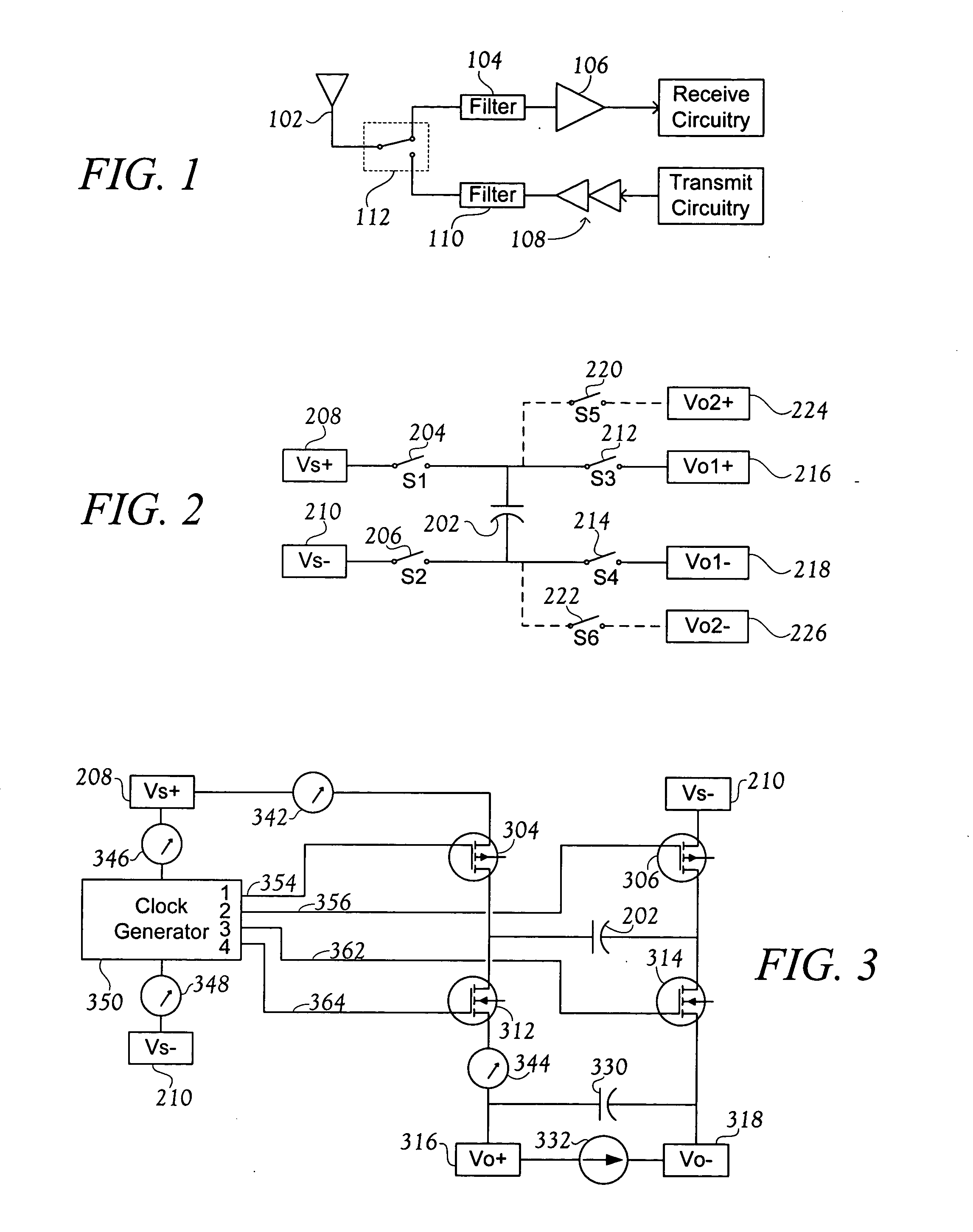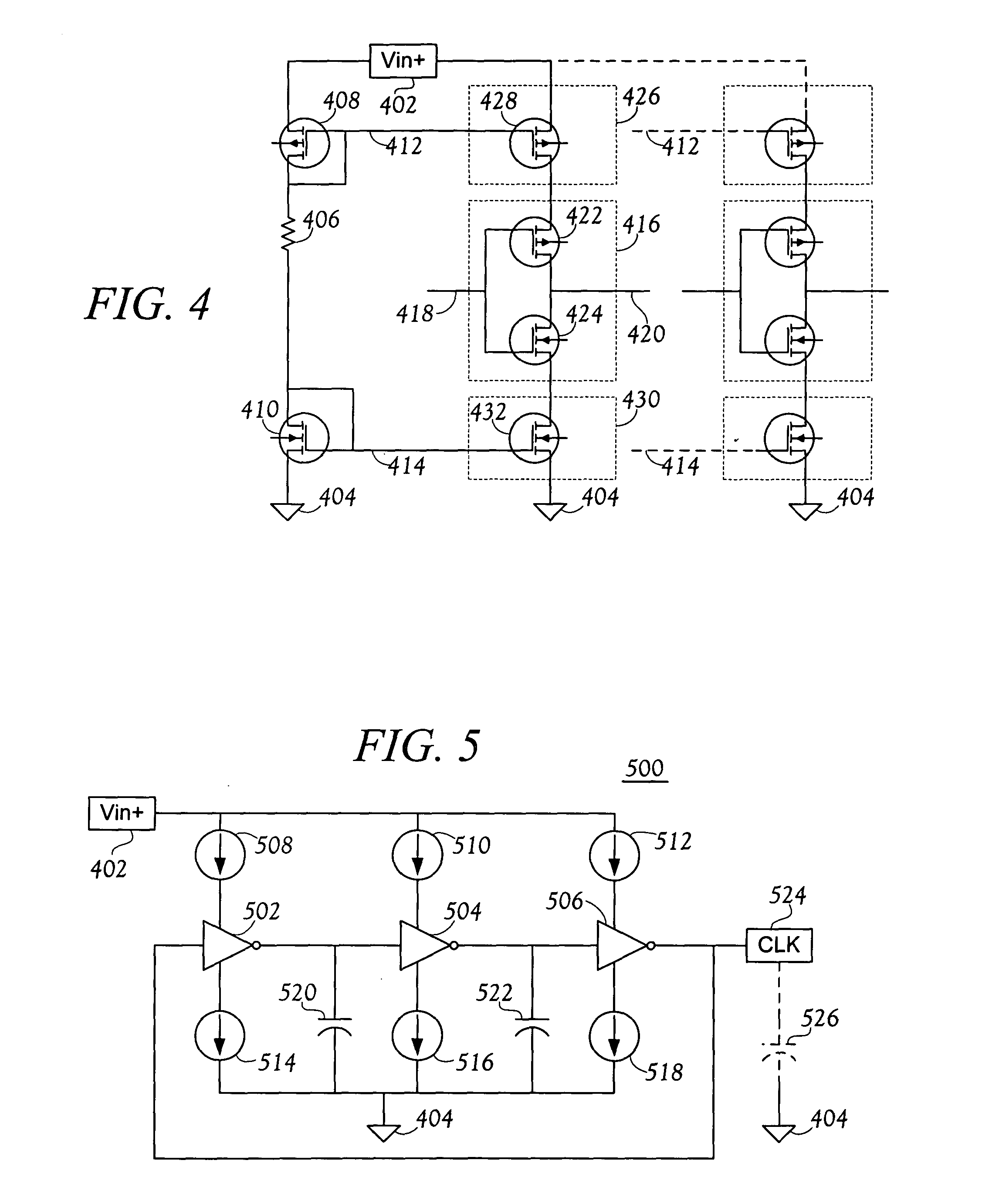Low noise charge pump method and apparatus
a low-noise, pumping technology, applied in pulse generators, pulse techniques, instruments, etc., can solve the problems of unacceptable interference with reception, large noise generation, and large noise, and achieve the effect of improving design and reducing nois
- Summary
- Abstract
- Description
- Claims
- Application Information
AI Technical Summary
Benefits of technology
Problems solved by technology
Method used
Image
Examples
Embodiment Construction
[0033] Overview—Charge Pump Configurations
[0034]FIG. 2 illustrates some basic charge pump operations. Filtering capacitors, typically present on each input and output supply, are omitted from FIG. 2 to avoid confusion with an energy transfer capacitor CT 202. When S1204 and S2206 are closed, CT 202 is connected to the source DC supply connections VS+ 208 and VS−210, and thus CT 202 is charged to the voltage VS, having a value [(Vs+)−(Vs−)]. S1204 and S2206 are then opened, permitting CT 202 to float. Next, S3212 and S4214 are closed, causing the floating transfer capacitor CT 202 to “fly” to the output supply (for which reason such capacitors are also called fly capacitors). The charged CT is thus connected to output supply connections Vo1+ 216 and Vo1−218 (output Vo1). Presuming that the voltage of output Vo1 is smaller than the voltage stored on CT 202, CT 202 discharges, transferring energy to Vo1, which may be an output supply.
[0035] Many different output configurations are po...
PUM
 Login to View More
Login to View More Abstract
Description
Claims
Application Information
 Login to View More
Login to View More - R&D
- Intellectual Property
- Life Sciences
- Materials
- Tech Scout
- Unparalleled Data Quality
- Higher Quality Content
- 60% Fewer Hallucinations
Browse by: Latest US Patents, China's latest patents, Technical Efficacy Thesaurus, Application Domain, Technology Topic, Popular Technical Reports.
© 2025 PatSnap. All rights reserved.Legal|Privacy policy|Modern Slavery Act Transparency Statement|Sitemap|About US| Contact US: help@patsnap.com



